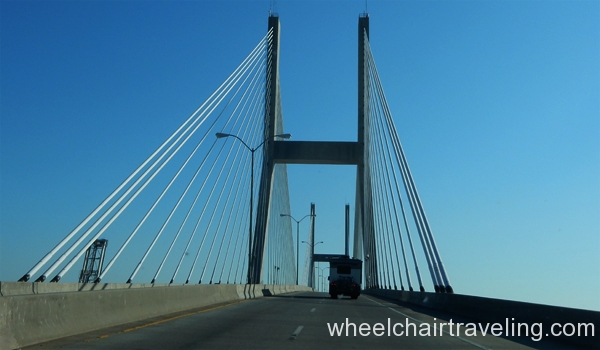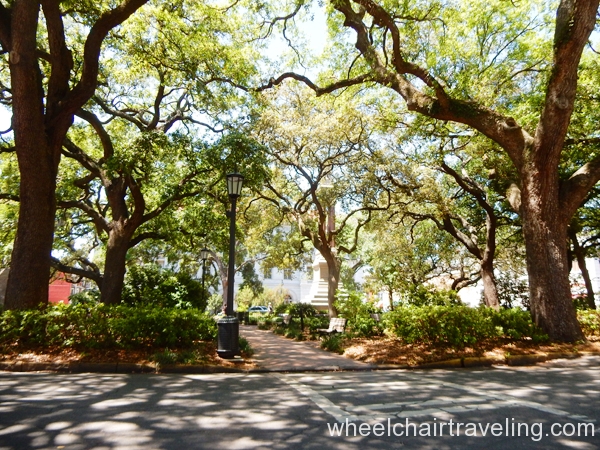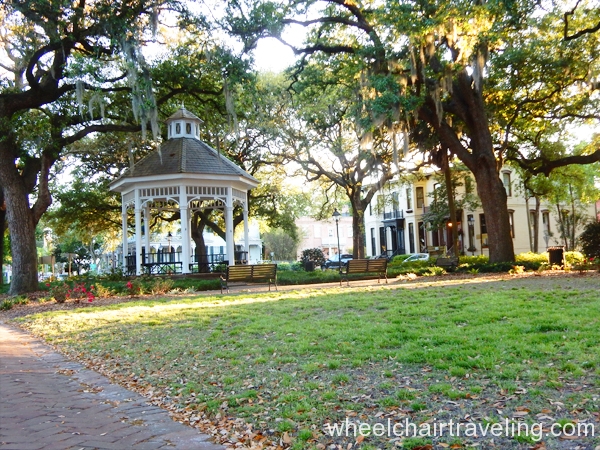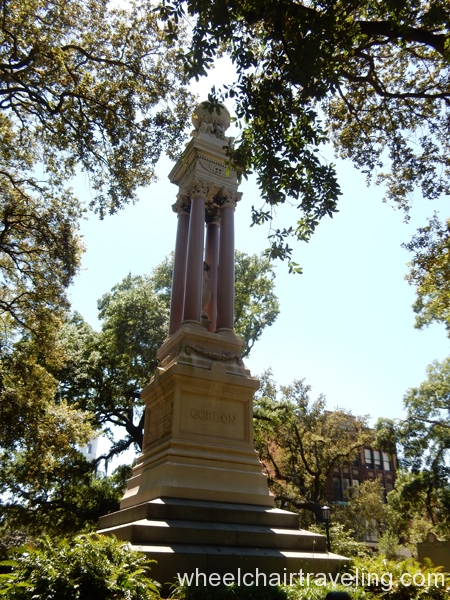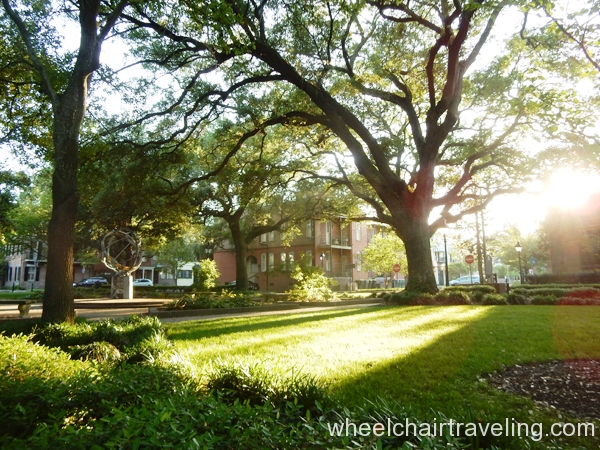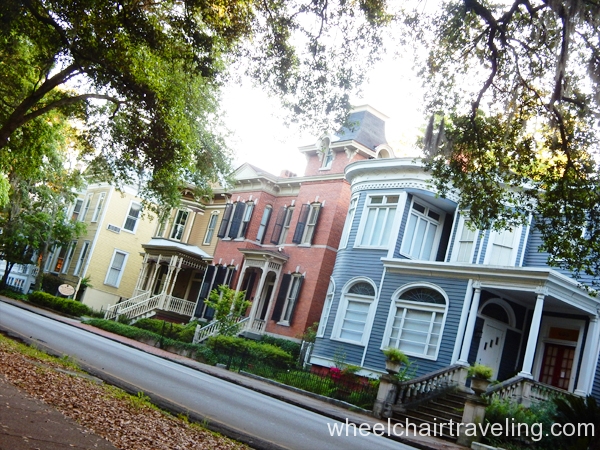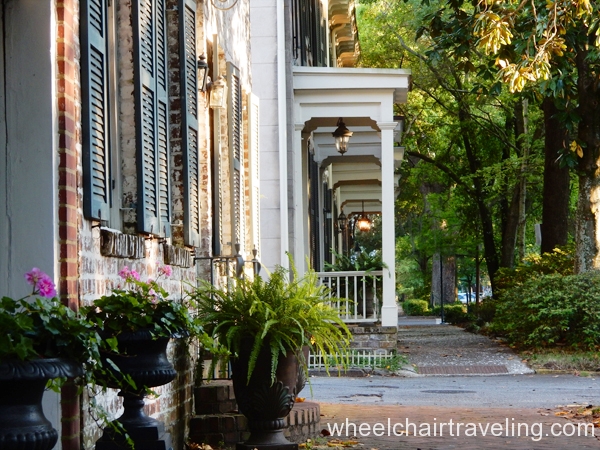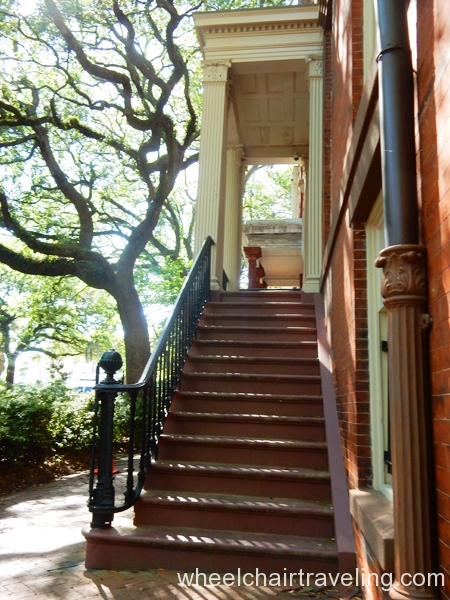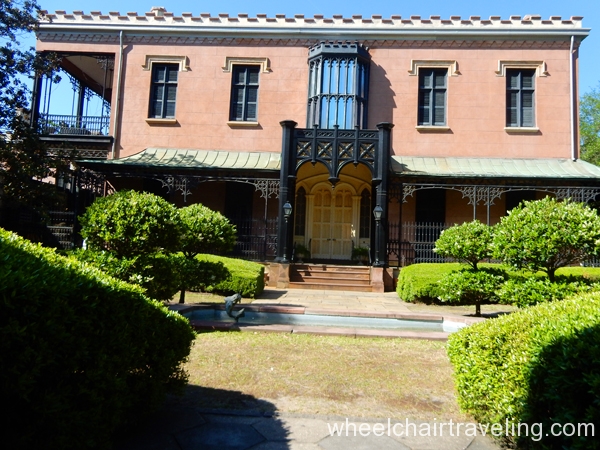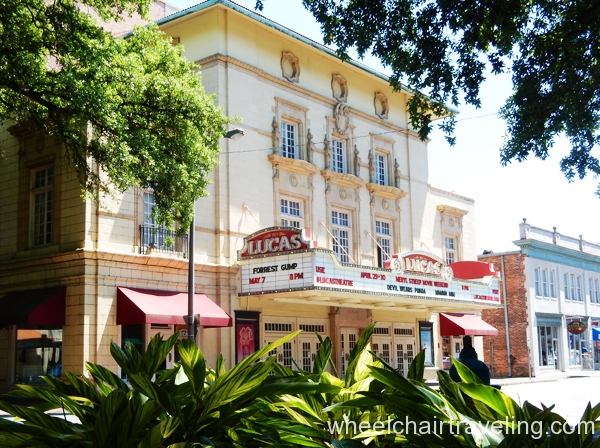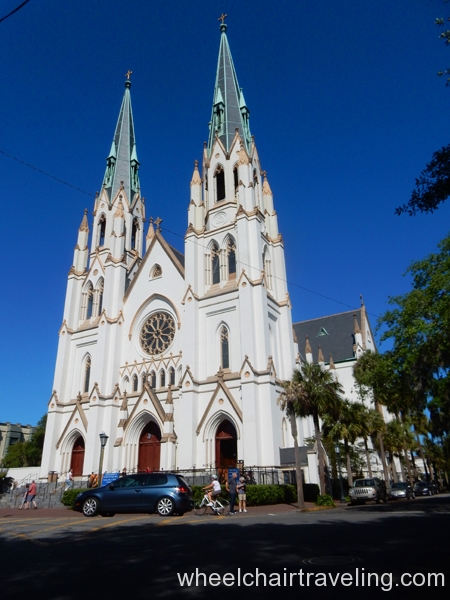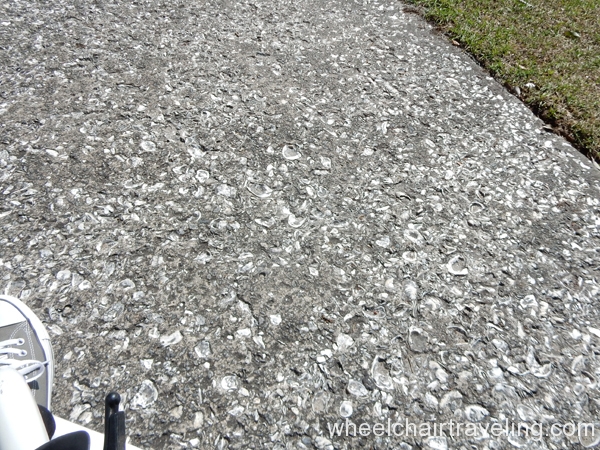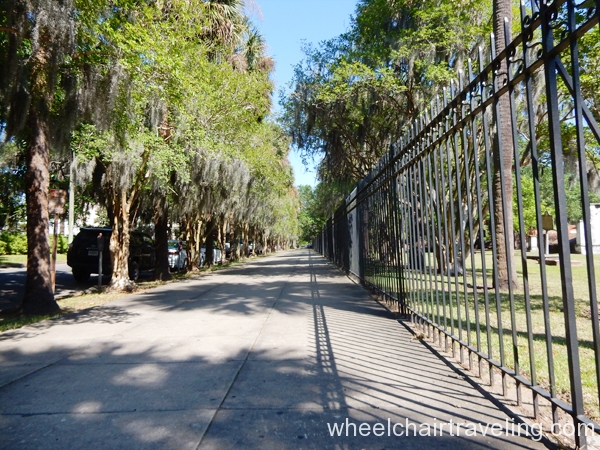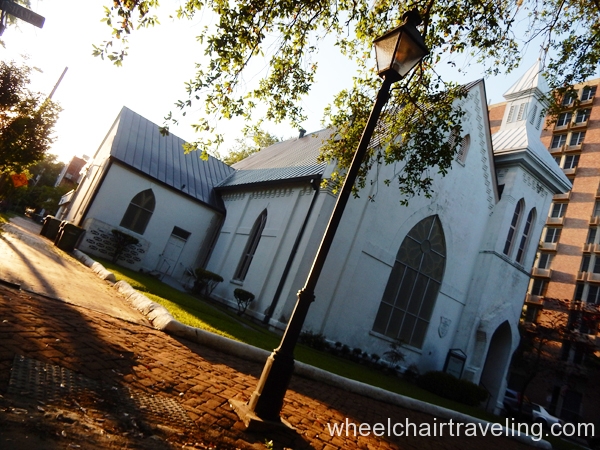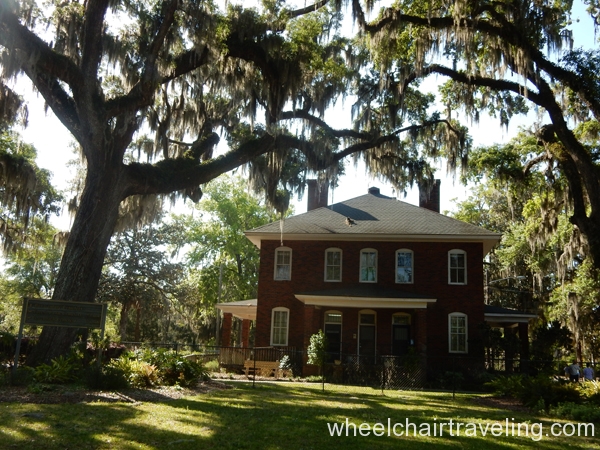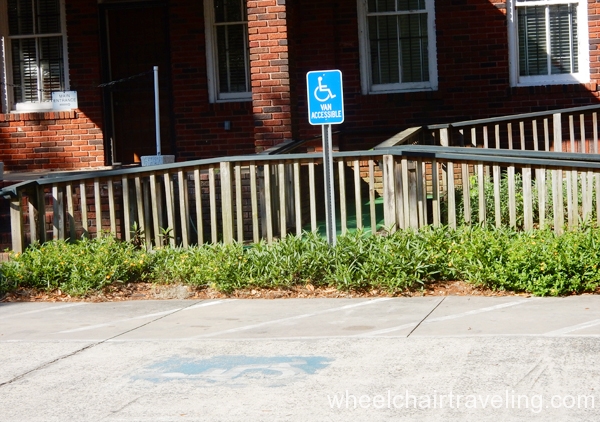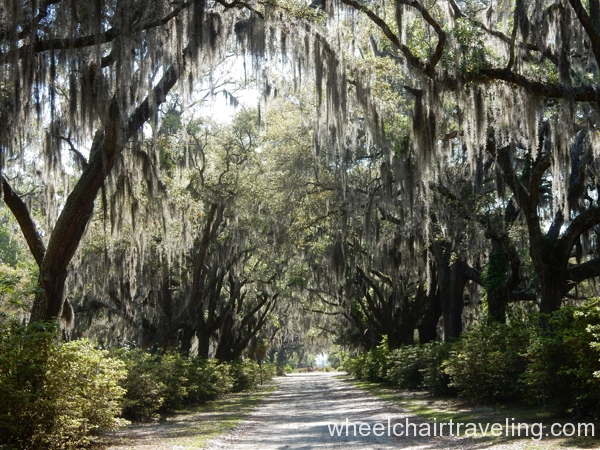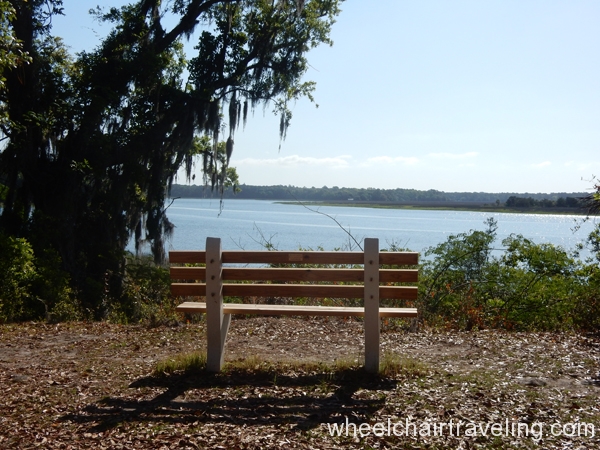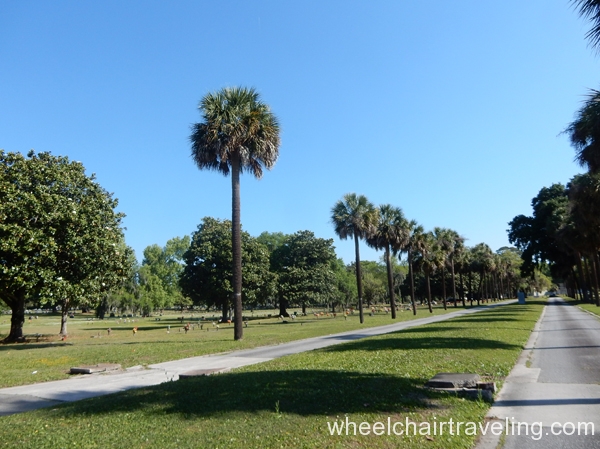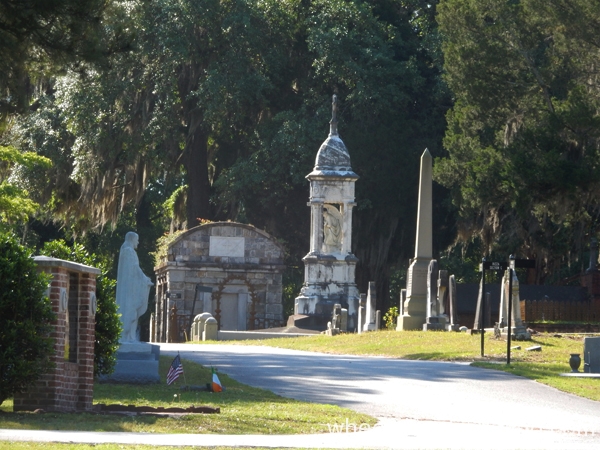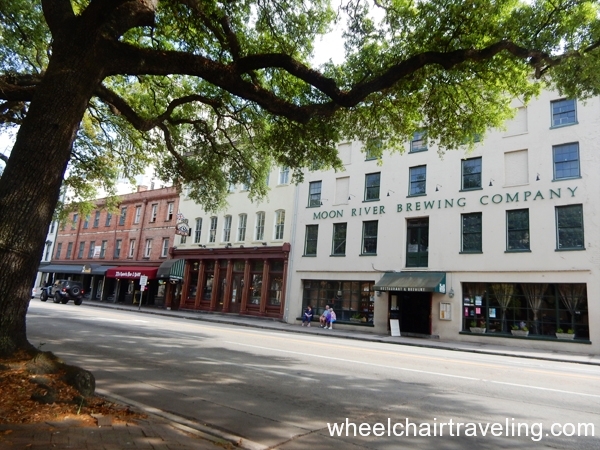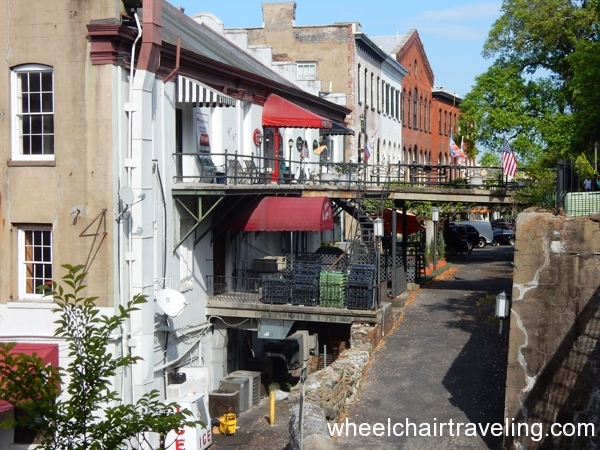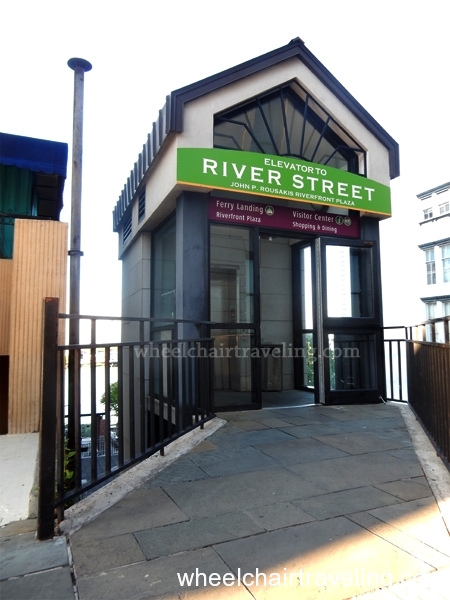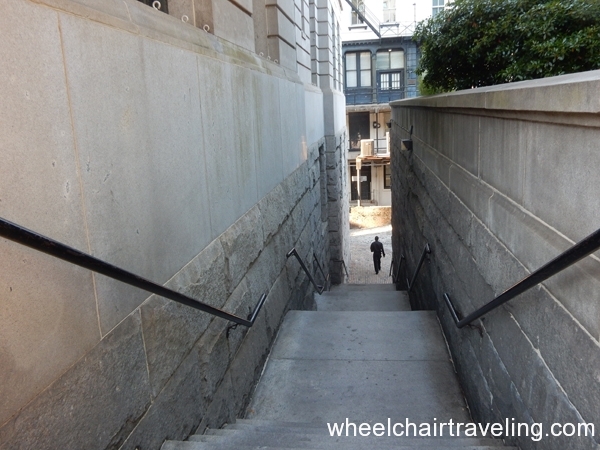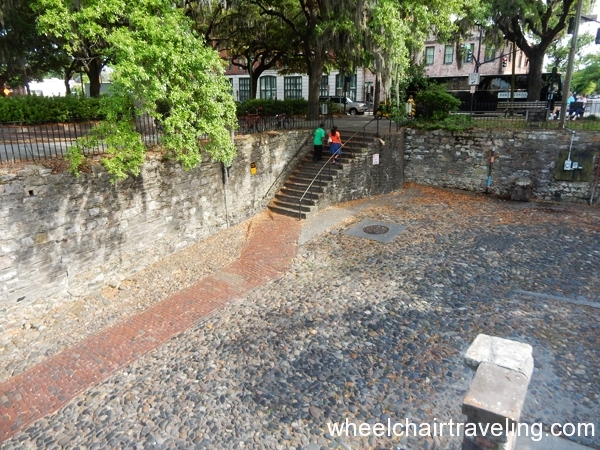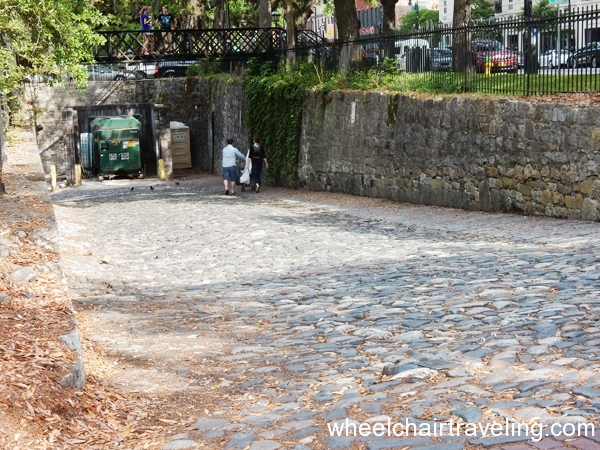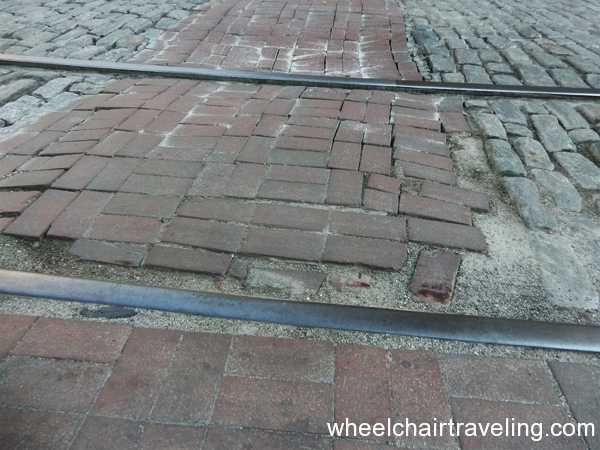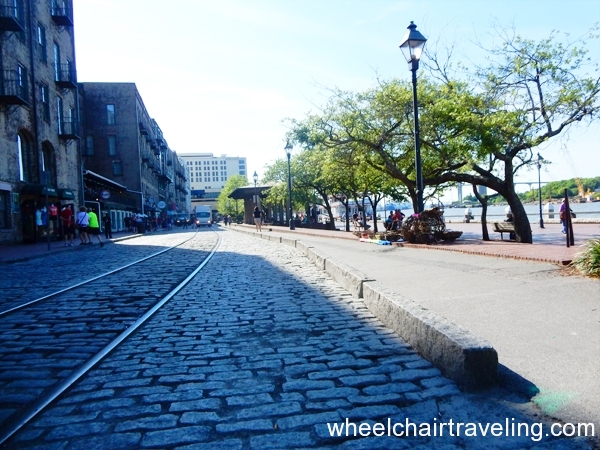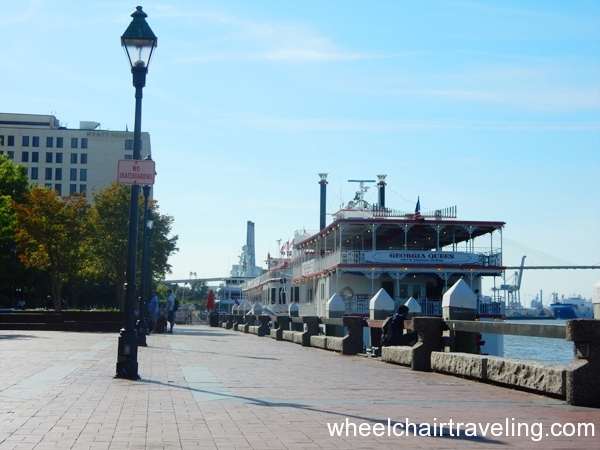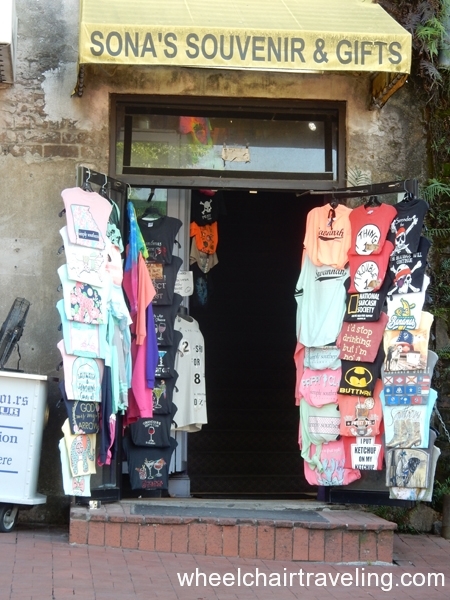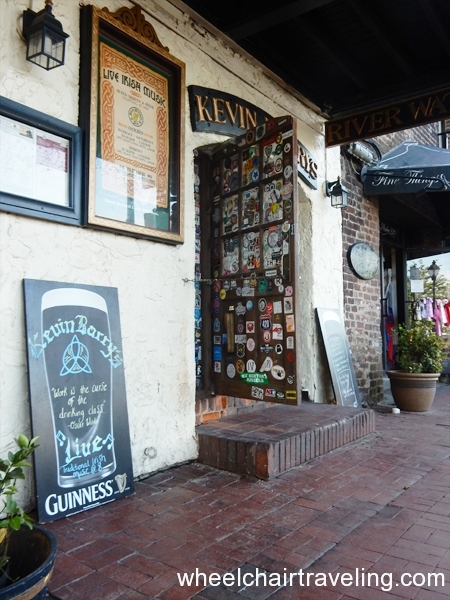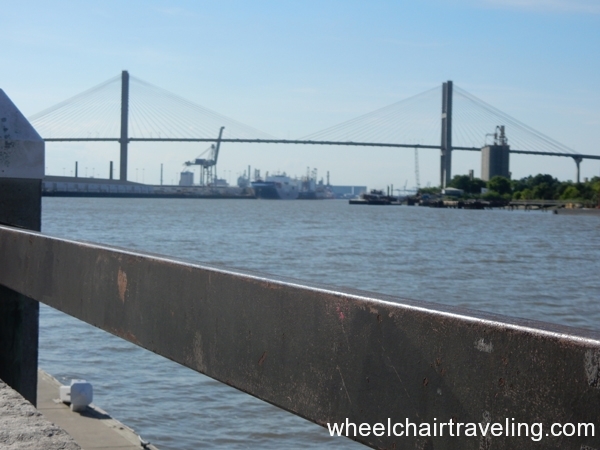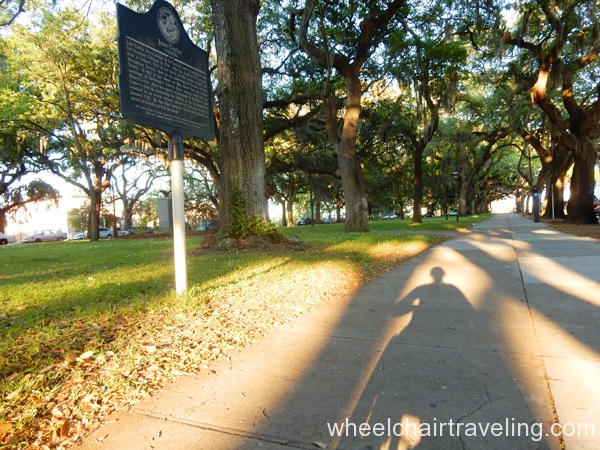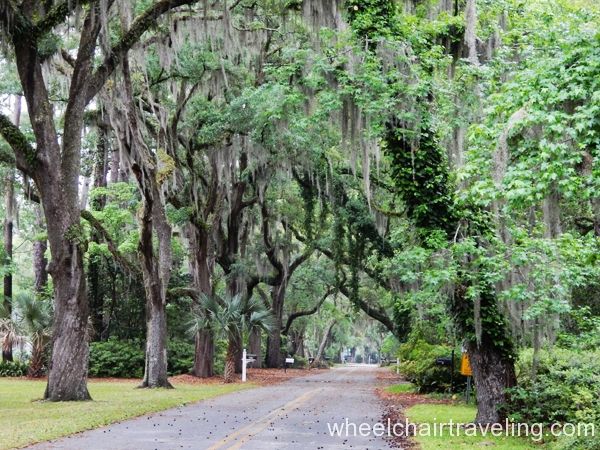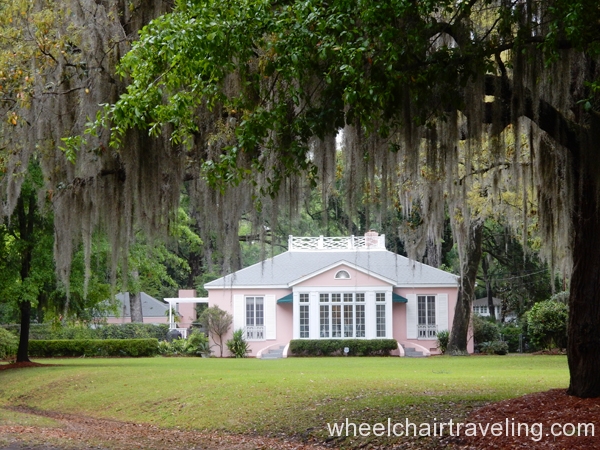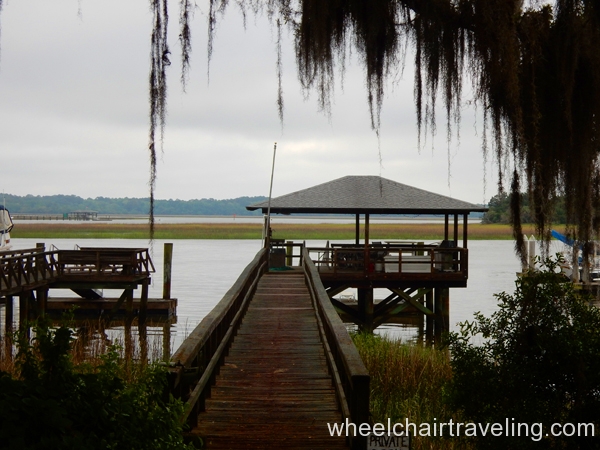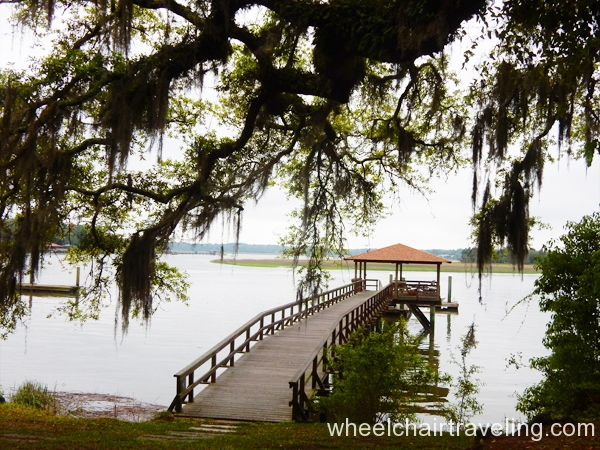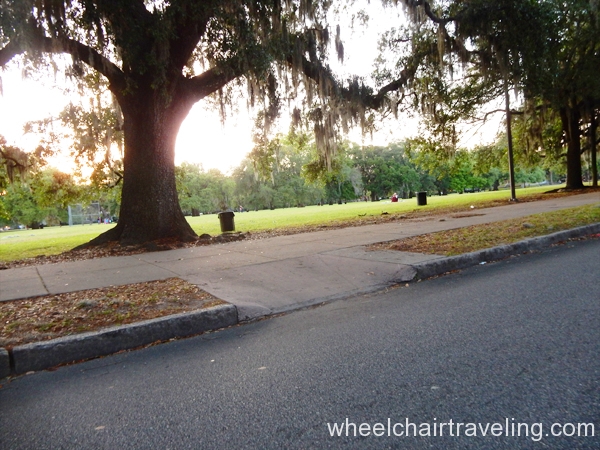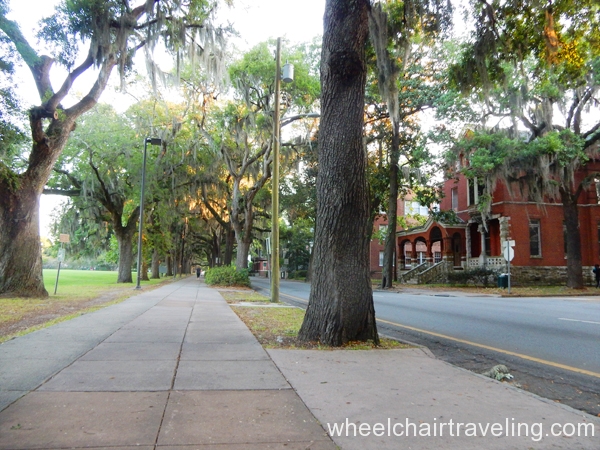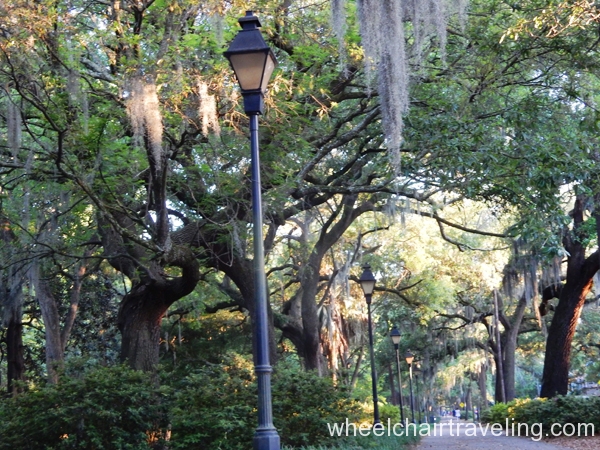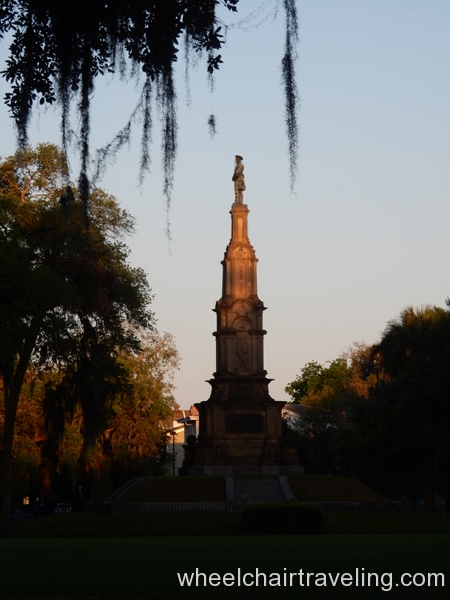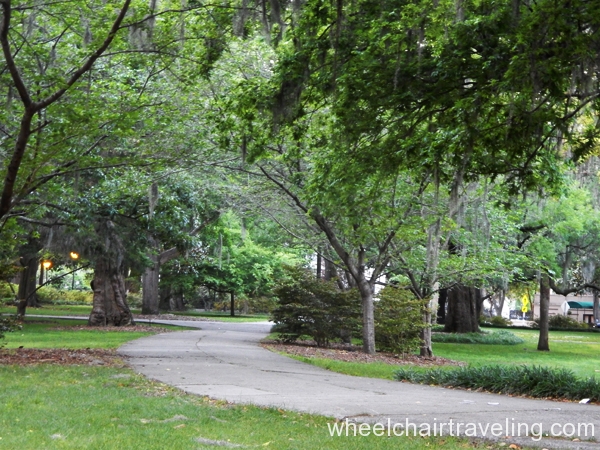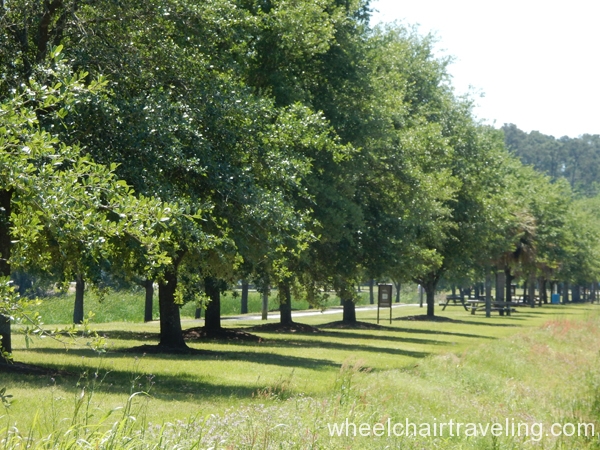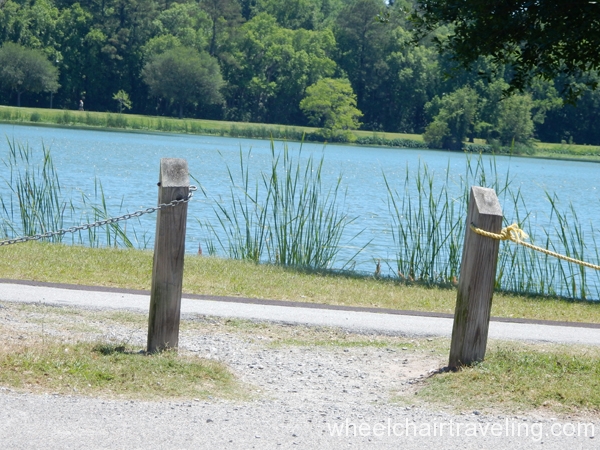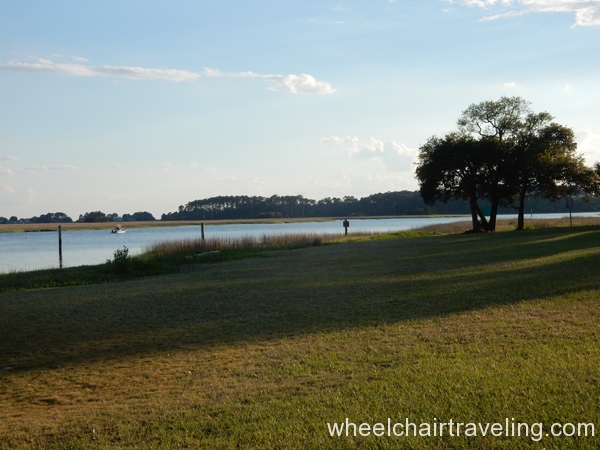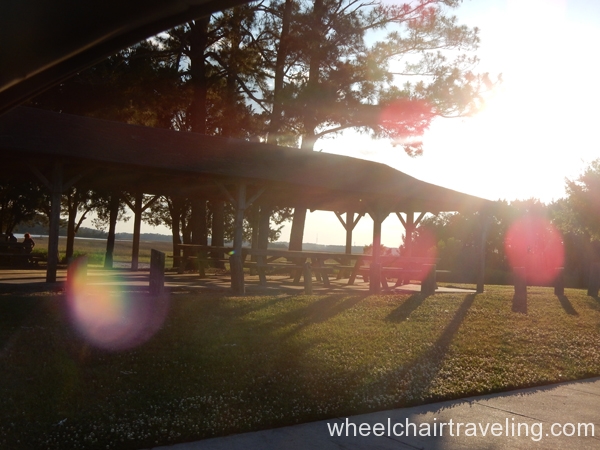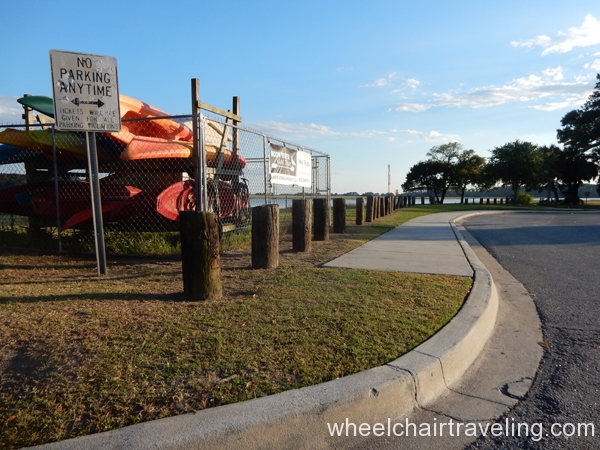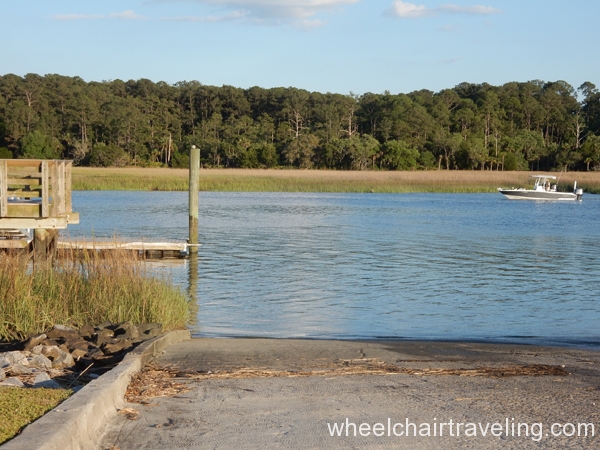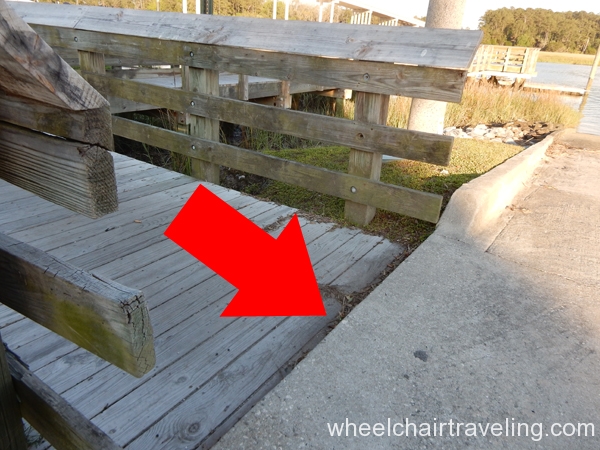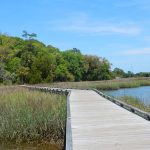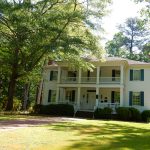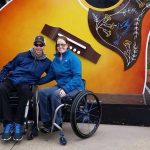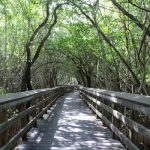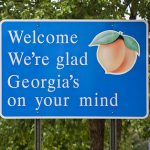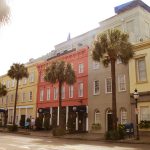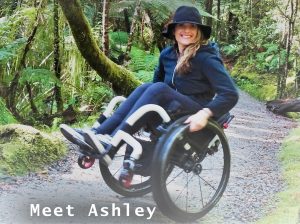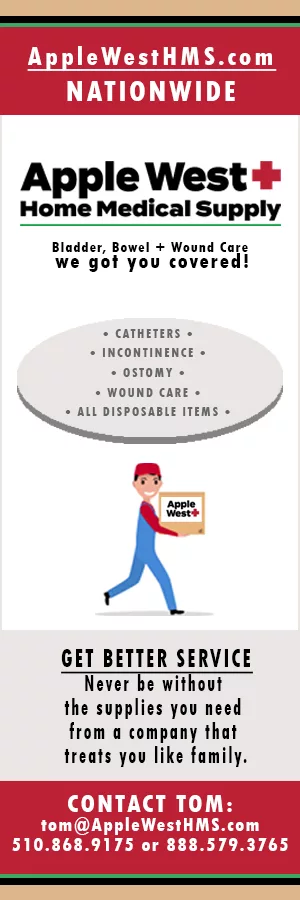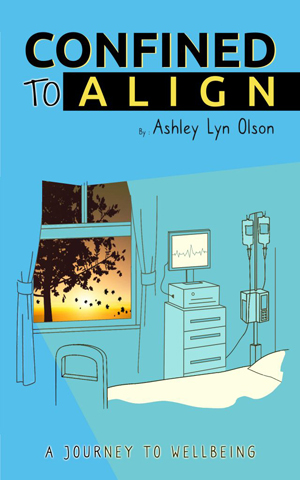A rich history mixed with a chic, country lifestyle is why Savannah, Georgia is one of the most popular places to visit in the United States. With so much to do and see, travelers will need to be selective, even when it comes to wheelchair travel in Savannah, Georgia.
Throughout Historical Savannah you will find of plethora courtyard squares where people often gather, rest, and even play some music. There are multiple points of interest nearby. A few city-selected vendors and entertainers are seen in the squares, all with approved identification tags, to keep you safe in Savannah, Georgia.
Savannah, Georgia has a considerable amount of different tours. The most popular is the Old Savannah Tours, which takes visitors around for approximately 90 minutes. A wheelchair lift is available to get into the open-air, covered trolley, but due to space limitations, using the hop-on and hop-off feature is not recommended. Not every trolley is accessible, so please provide at least 24-hour notice. Ghost tours are also given on trolleys, which some consider a little too hokey. Many companies also offer walking tours, though it is best to speak with someone in advance to be sure the route is accommodating.
Historical Structures
Visitors can have a satisfying time wandering around as historical sites are everywhere. Most of the historical buildings and homes have no wheelchair access, but there are some with partial access, such as the Owen Thompson House. Churches and other religious buildings often have a wheelchair accessible entrance, which may be located on the side or around the back. The Lucas Theatre, showing movies and performing arts, has been restored with some access.
A few cemeteries are located around Savannah that draws ghost hunters, paranormal enthusiasts, and fans of the TV show “The Walking Dead.” It’s a fact that much of Savannah is a cemetery, it was just covered up and built over by colonial settlers; another reason why spirits are reported to be quite active here. The Colonial Park Cemetery is located in Historic Savannah. The most well-known cemetery is the Bonaventure where people often spend a few hours strolling the paved streets under oak trees. One handicapped parking spot is available, or feel free to drive around.
River + Bay Street
River Street is a historical area by the Savannah River that is now a 9-mile tourist zone with souvenir shops, galleries, and restaurants, some of which have wheelchair access; the Savannah Bee Company is one recommendation. Though most of the city is on the same level, River Street is sub-level. Staircases lead visitors down, but there is an elevator by the Hyatt Regency Hotel. With only one elevator with barrier-free access, visitors with wheelchairs should plan routes accordingly on River Street. A smoothly-lined, brick pathway hugs the water’s edge, but the rest of the brick and cobblestone walkways have uneven gaps, making it challenging for most to wheel over. The office for the Savannah Riverboat Cruises is located on River Street and is also where people board. Unfortunately, the office is not wheelchair friendly nor are the restrooms onboard the boat.
Above River Street is Bay Street, which is also lined with shops, restaurants like the Moon River Brewing Company, and historical points of interest such as the Cotton Exchange building. Emmet Park is a small park surrounded by oak trees that run along Bay Street for a few blocks. On the river side of Bay Street, wheelchairs will encounter a few more barriers, so backtracking may be required. A Savannah, Georgia Visitor Center office is also located on Bay Street, and another is located by the Savannah, Georgia Civic Center. For a look at some beautiful homes overlooking the Skidway River wetlands on the Isle of Hope, go explore Bluff Drive. This drive is right by Wormsloe State Historic Park and close to Skidway State Park.
Parks + Gardens
Other than the many scenic courtyard squares and green spaces mentioned above, try Forsyth Park, a local favorite with a picturesque water fountain, statues, and a historical mansion on the border. Lake Mayer Park is outside of the historic downtown area on the way to the Isle of Hope. This park has a paved, level pathway that wraps around the lake. Access to a fishing pier has been made possible, but expect to also find picnic tables, bathrooms, and designated parking. For the best sunset views, watching is recommended on Tybee Island. The Rodney J Hall Boating Area on the Isle of Hope by the Skidaway River has little to no access to wheelchairs. There is designated parking and a covered shelter for picnic tables, but no accessible pathway connecting the two; there is also a paved pathway that leads to the dock and boat launch area but no curb cutout or ramp.
Explore the top outdoor attractions in and around Savannah, GA.
Accessibility, Barriers + Getting Around
An effort has been made to improve wheelchair travel access in Savannah, Georgia, but there are still holes in the execution and barriers that may or may not be possible to fix. Plus, there is still resistance from some businesses and property owners to create wheelchair accessibility.
Throughout Historical Savannah, curb cutouts were commonly present, but not at every corner nor were they always level with the street. A general assumption is that there are more barriers the more off the beaten path you go, but popular areas were not always wheelchair friendly. Sidewalks can narrow too much to pass or be unkempt, and in these cases, take to the street but roll with caution. Historical Savannah has the most potential for barriers because more brick and cobblestones are used on pathways. Backtracking or riding the streets at times will be necessary.
Barrier-free shops and restaurants were not plentiful, but something can always eventually be found. Whether it is what you want is another question. Providing a portable ramp, on request, solves this issue while still maintaining the original structure. Outdoor seating is popular in Historic Savannah and is an option even if the rest of the restaurant is not wheelchair friendly. Accessible public toilets are also a challenge, especially for power wheelchairs and scooters. Hotel lobbies and museums seemed to have the best access.
Designated handicapped parking spots were scattered throughout Historic Savannah, though in some spots, vans with ramps may have trouble if the landing pad is not level. Besides the trolley, Savannah has an accessible bus system and Yellow Cabs are equipped with a ramp for a wheelchair.

